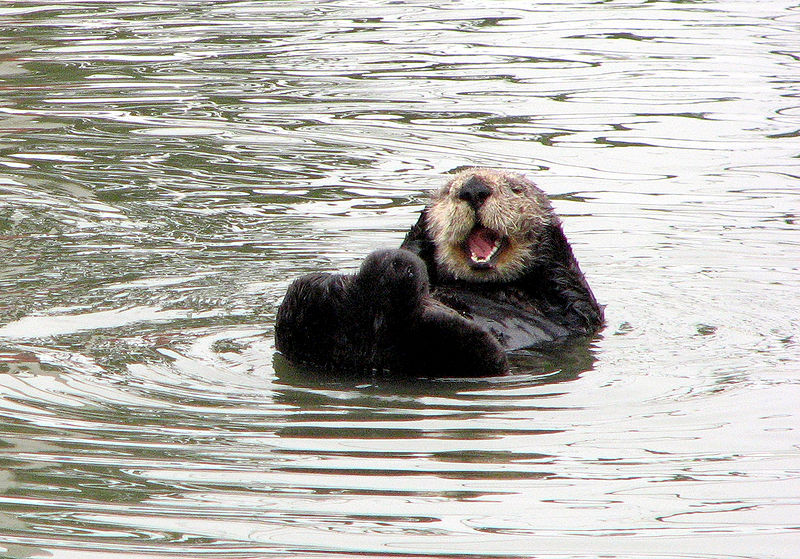
Photo credit: Sstasi
It just so happens that this week is Sea Otter Awareness Week, so I wanted to take a moment and give a shout out to arguably the cutest animal to ever live on earth. (The key word is “arguably,” but seriously did you look at the photo?)
The sea otter is much more than cute, it happens to be a member of the weasel family, an endangered species and is also frequently referred to as a “keystone species” for playing such a big role role in California’s kelp forest ecosystem despite it’s relatively small size.
In California, the Southern sea otter has a long tragic history. (The Northern sea otter lives along the coast of Oregon, Washington, Canada and Alaska and has a separate, but similar tragic history.) Sea otters used to live along California’s entire coast until they were mercilessly hunted for their beautiful fur.
Without any blubber, sea otters rely on their extremely think fur to keep warm in cold ocean water with one million hairs per square inch! Of course, this luxurious fur fetched a pretty price back in the day leading to a quick demise of the Southern sea otter, which was thought to be close to extinction long before 1850. (For a more detailed description of their demise check out the Wikipedia Sea Otter page.)
All sea otter hunting was banned in 1911, but at that point there were no sea otters living along California. Then low and behold about 50 Southern sea otters were discovered living near Big Sur in 1938. Today, all sea otters in California are descendants from this lone group of survivors and the population hovers around 2,500 to 3,000, which is still very low compared to original populations estimates of 16,000.
Alas, sea otters are considered “locally extinct” in Southern California. The absence of sea otters has taken its toll on Southern California’s kelp forests because there just isn’t any species quite as good at eating sea urchins. Without an excellent top predator to keep them in check, urchins eat kelp and reproduce without abandon, which is a big problem for local kelp forests.
Every once in awhile a lone sea otter is spotted in Southern California giving hope that they might return. In the meantime, check out the cool exhibit at Cabrillo Marine Aquarium and expand your sea otter knowledge during Sea Otter Awareness Week. Because the more we know about sea otters, the better off they are.
Leave a Reply